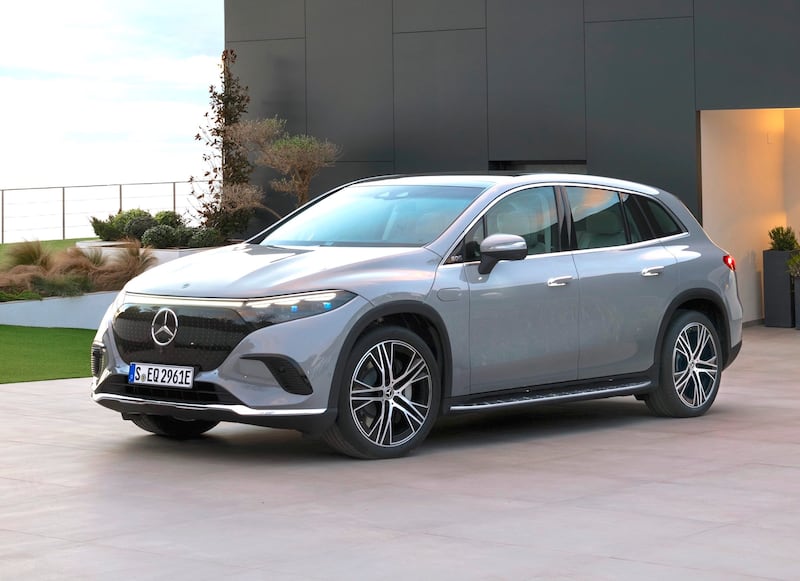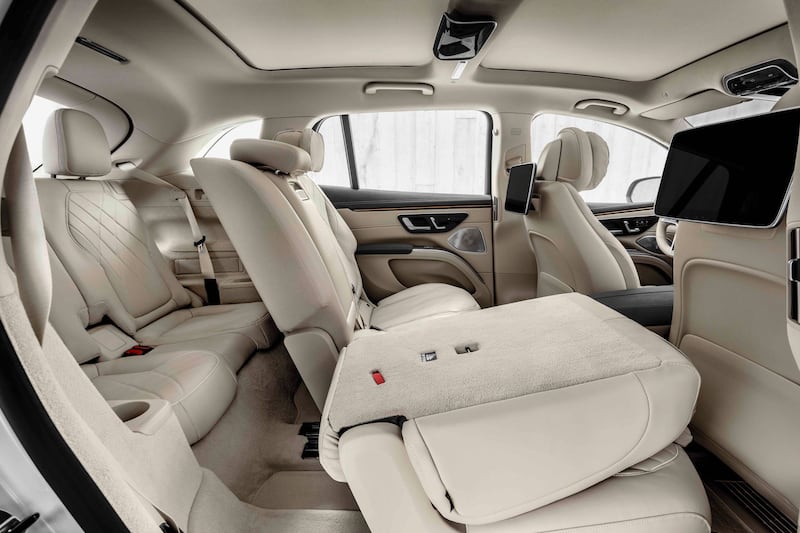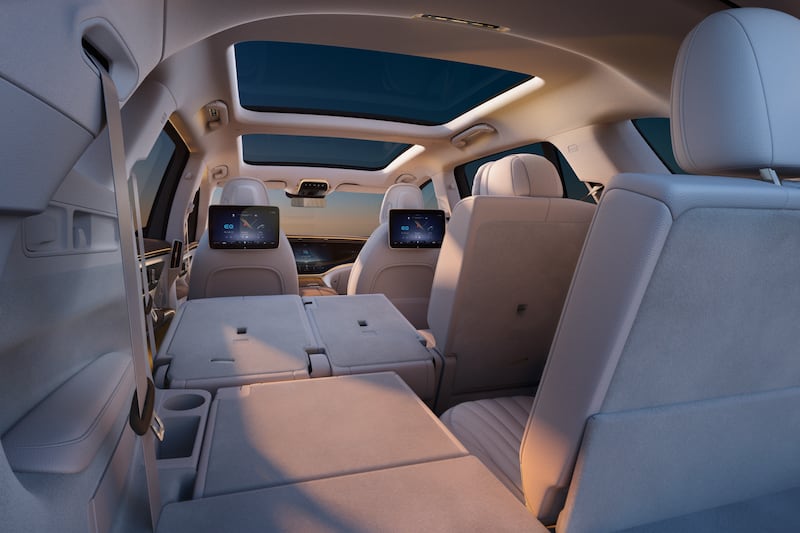When it comes to electric cars, the bigger the battery the better, it would seem. Right now, drivers still fixate on range; soon the focus will rightly be on economy and kWh/100km figures. The focus will – and should – also be on infrastructure.
Having delivered an electric car capable of getting from Malin Head to Mizen Head on a single charge (as our friends at AA Ireland proved several months ago), Mercedes is still eager to show why the brand that gave us the first modern automobile can be a pioneer of the new electric age as well.
The long legs of the EQS saloon came down to two things: its massive battery pack with a capacity of over 100kWh, plus the aerodynamics of a lozenge. All encapsulating a luxury limo interior.
Mercedes is now offering that luxury limo feel in a seven-seat format. For that, you must eschew the saloon in favour of what Mercedes bills as a luxury EV SUV.
READ MORE

With hefty batteries to lug about, SUVs became the natural choice format for EVs, their bulk making the battery weight look less outlandish than it would in a regular family saloon or hatchback.
However, it needn’t adopt the rugged off-roader format. The new EQS SUV eschews the styling of so many other SUVs. Instead, it’s all rather sedate, reminiscent of the R Class from the age of people carriers rather than the hard-nosed G-Wagen.
Not that its styling is a clear-cut winner. During our week in the car, it garnered mixed reviews from onlookers, with several finding its look a little bland. But while maximising range remains a priority, then aerodynamics will always supersede aesthetic styling choices. It’s also why other all-electric SUVs, like the iX and the Q8 etron also look more like inflated hatchbacks than off-roaders.
For this EQS SUV all that focus on aerodynamics means a drag coefficient of just 0.26, which is on a par with the slippery Honda Insight and better than the new Toyota Prius. For a seven-seater hulk that’s an engineering masterstroke.
The good news is that the age of the seven-seat EV is dawning. It’s been a major missing link in the line-ups to date.
Mercedes already offers a 5+2 format in its smaller all-electric EQB, but this is one of the first full-sized seven seaters. It is to be followed by Kia’s all-electric EV9, then a version of that from sister brand Hyundai, probably on sale next year. Volvo will also land its EX90 here by year’s end.
None of these will come cheap, however, so it could be several more years before we start to see affordable seven-seat family EVs on the market. For 2024, if you need seven-seats in your EV, then you had better have €70,000 or more to spend. Or double that if you want a Merc.

Here, for a mere €140,000, you get a surprisingly decent amount of legroom in the third row, plus all the power assisted seat adjustment to save you tugging at levers and flipping up seats to get in and out. Even with the third row up, you’re left with a decent amount of bootpsace, at over 195 litres.
As you’d expect, the cabin is plush and the legroom in the second row is akin to transatlantic business class, though there are some plastic elements like the air vent controls that should be better finished. The cabin of our test car was a sea of cream, from the upholstery to the carpet; a gorgeous place to be but impossible to keep clean unless you require all passengers to change into carpet slippers before they enter.
On a more positive note, the touchscreen set-up and interface has become the standard bearer for others to follow. To date car companies have really struggled to get the user interface right, either overloading with menus and sub-menus, or prioritising trivial distractions while burying the important functions. Mercedes’ current MBUX is the best out there right now.
The interior resembles a plush sittingroom and Mercedes clearly sought to have that sense of refinement reflected in its driving style. The EQS SUV is whisper quiet in the cabin, even when it’s blowing a gale outside. Only the BMW iX seemed to be better at cocooning its occupants from the elements outside. Fitting with air suspension, you waft over speed bumps and through potholes.
Admittedly it still can’t overcome the bulk of this car; weighing in at 2.7 tonnes and set relatively high off the tarmac is naturally going to impact on its dynamics. However, the steering response is impressive and four-wheel steering makes this big car a doddle to drive on tight winding roads or cramped car parks.
To achieve its acclaimed 626km range means you need to be light on the throttle, but by opting to keep the 0-100km/h time at a reasonable 6.7 seconds in our 450+ test version, Mercedes is sending the message that the EQS SUV accepts its lot as a big family car. If you love lurching forward with that traditional EV acceleration kick then look elsewhere.

What you have with this iteration of the EQS, the 450+, is a 360bhp electric motor powered by a huge battery pack with 108.4kWh of usable capacity. The battery can rapid DC charge at up to 200kW, delivering a 10-80 per cent top up in just over 30 minutes. Mercedes reckon you can achieve a consumption figure of 18.2kWh/100km from this SUV, but we couldn’t manage to get the figure below 20kWh/100km for very long.
Given it is the saloon EQS with a different body format, it inherits that car’s flaws. That is predominantly an issue we noted with braking bite. In both EQS formats, the brake pedal doesn’t offer the reassuring firmness we’d expect – and want – in a car of this size. Mercedes really needs to address the mushy feel of the EQS brake pedal under pressure. It’s not what you expect from a luxury car from this brand. A few more calibration tweaks are needed when the midlife revision arrives in a few years. The smaller – better value – EQE version is much more adept on the road and with a far more reassuring braking action.
So, as with the saloon, Mercedes have managed to make incredible strides in overcoming range, but they have not quite delivered the sort of driving performance and pleasure that its non-electric S-class iterations currently offer.
The EQS will easily match its rivals in terms of range, refinement, and roominess, but at €140,000 you are handing over quite a bit more cash to have that big three-pointed star on front nose.
Lowdown: Mercedes-Benz EQS SUV 450+
Power: 360bhp electric motor putting out 568Nm of torque
0-100km/h: 6.7 seconds
Range (WLTP): 626km
CO2 emissions (motor tax): 0 (€120)
Price: €139,880 (€146,038 as tested)
Our rating: 3/5
Our verdict: Great range and refinement, but as with the saloon it falls short of S-class driving traits














